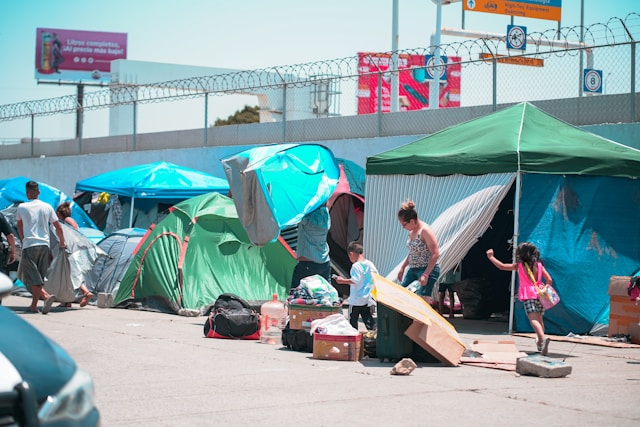With the rapid influx of immigrants crossing the southern U.S. border, New Mexico is witnessing the effects on its economy and workforce.
As local economic institutions struggle to find ways to tend to the needs of the growing population, some see the influx as a call for strategic adaptation while others view it as an economic strain that requires immediate policy restructuring.

As migrants continue to flow into the U.S., New Mexico has seen a mixture of economic consequences, both positive and negative.
In industries like agriculture and construction, where labor shortages have been reported, immigrants are often chosen to fill those vital roles. However, with an increased demand for resources, in places like schools and hospitals, a new strain is created on the state’s infrastructure.
Sharry Mamawal, a registered nurse and member of the nonprofit Civic Voter Engagement, said that a lot of the border communities have been overwhelmed.
“They don’t have the resources to deal with the massive influx of immigrants,” Mamawal said. “This affects everything from emergency services to schools and police departments. Uncontrolled immigration is a very serious issue.”
Audrey Duran, an architecture student at the University of New Mexico, added to this perspective, saying that a lot of people are struggling already and believes that adding immigrants to the labor force will contribute to local economies, but thinks there should be measures to balance workforce integration with local needs.
“Adding more people into the mix without resources to back them up doesn’t feel sustainable at all,” Duran said.
The New Mexico Border Authority recently introduced plans to streamline border management and improve economic sustainability. In a presentation earlier this year, Executive Director Gerardo Fierro outlined new initiatives aimed at managing and maximizing New Mexico’s economic potential in a way that supports border infrastructure and communities. His goals for 2024 focused on efficient resource allocation, improved border facilities and strengthened partnerships.
One of Mamawal’s primary concerns pertains to the border and it is security, especially with high crime rates in border communities. She argued that a necessity for national security would be enforcing a process similar to post-9/11 airport security upgrades.
“If someone is in a criminal database, they should not be allowed into the country,” she said. “Immigrants should be vetted properly and thoroughly to ensure the safety of citizens.”
Duran said that while increased border security is a complex issue, clear processes that respect immigrants and citizens alike could make New Mexico a leader in effective border policy.
“It’s possible to have compassionate policies that still ensure safety,” Duran said. “We want people to come here and work, but we also want to know who’s coming in.”
As the federal government tries to mitigate the immigration problem, border states feel the pressure of real-world issues. Many community members, including longtime New Mexicans like Mamawal, observed that unchecked immigration can contribute to job competition and increased homelessness.
“The massive influx of immigrants is decreasing jobs for New Mexicans, increasing homelessness and heightening the availability of illegal drugs in our state,” Mamawal said.
New Mexico already faces challenges in important areas such as education and health care. New Mexico ranks last in education in the U.S., and the state’s schools are struggling to accommodate the increase in students, and some fear that a surge of new residents will add further stress to these components.
“This crisis is burdening an already weak education system,” Mamawal said. “New Mexico is already a poor state, and we have many children whose only meals come from free school lunches.”
Echoing this concern, Duran said that it’s about creating sustainable communities where everyone can thrive, something he said can be hard to do when resources are stretched so thin.
Both Duran and Mamawal believe that diverse immigration policies could help New Mexico make sure there is sustainable growth without overwhelming local schools, health care and public services.
Mamawal also stressed that immigration reform should take the bipartisan route in order to be successful.
“Voters on both sides want to see the crisis addressed in tangible ways,” she said. “They want to see both sides work on a bipartisan bill to improve the crisis so you have more legal immigration and less illegal immigration. The process is broken, and we need to fix it.”
Her perspective comes from a place of personal history, as her father-in-law legally immigrated from the Philippines in the 1950s and went on to serve in the U.S. Air Force.
As a fifth-generation New Mexican, Mamawal has witnessed the economic toll firsthand. She noted the economic differences between New Mexico and other states like Texas and Arizona, highlighting that New Mexico’s limited budget makes it more vulnerable to financial burdens.
